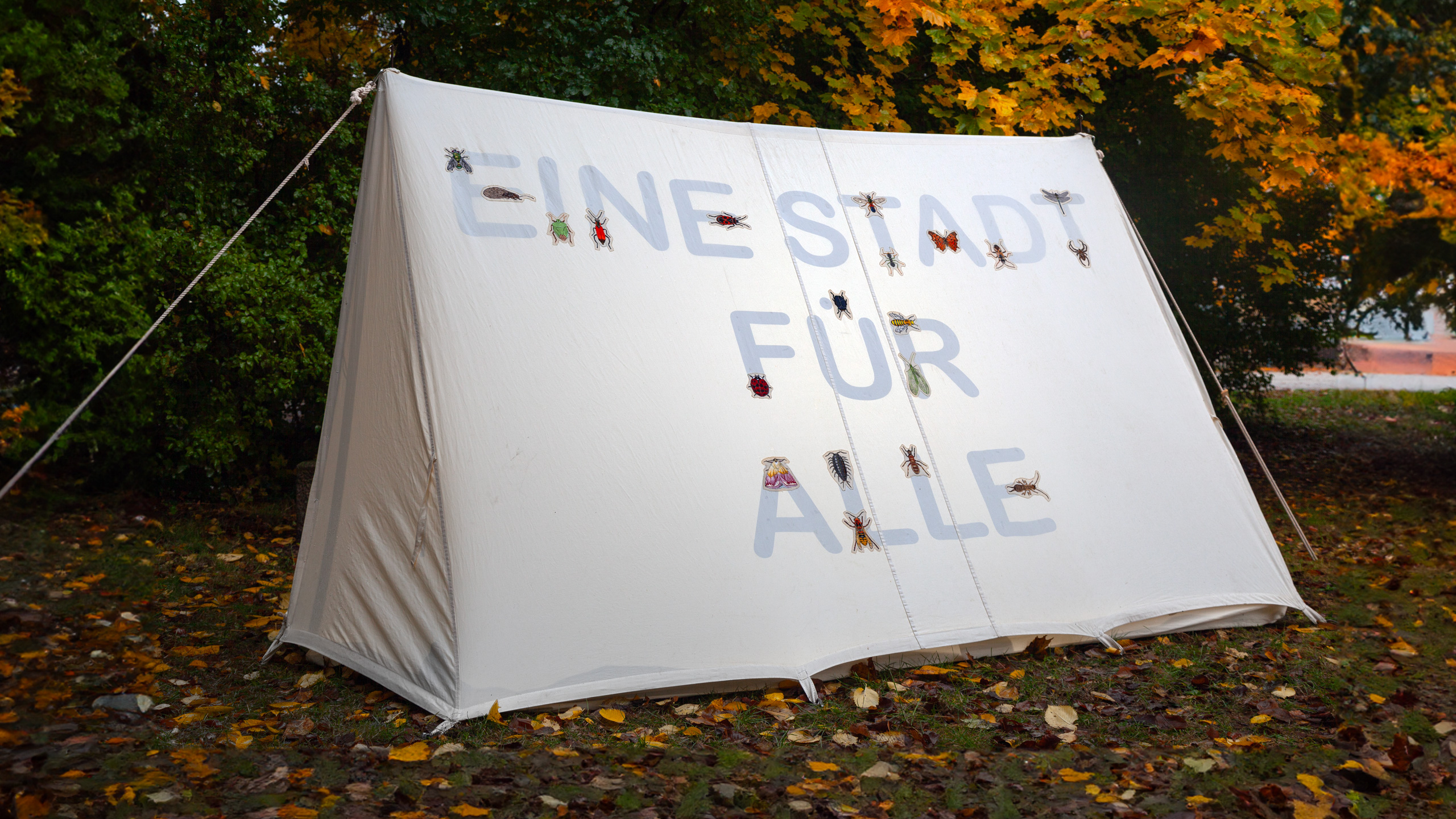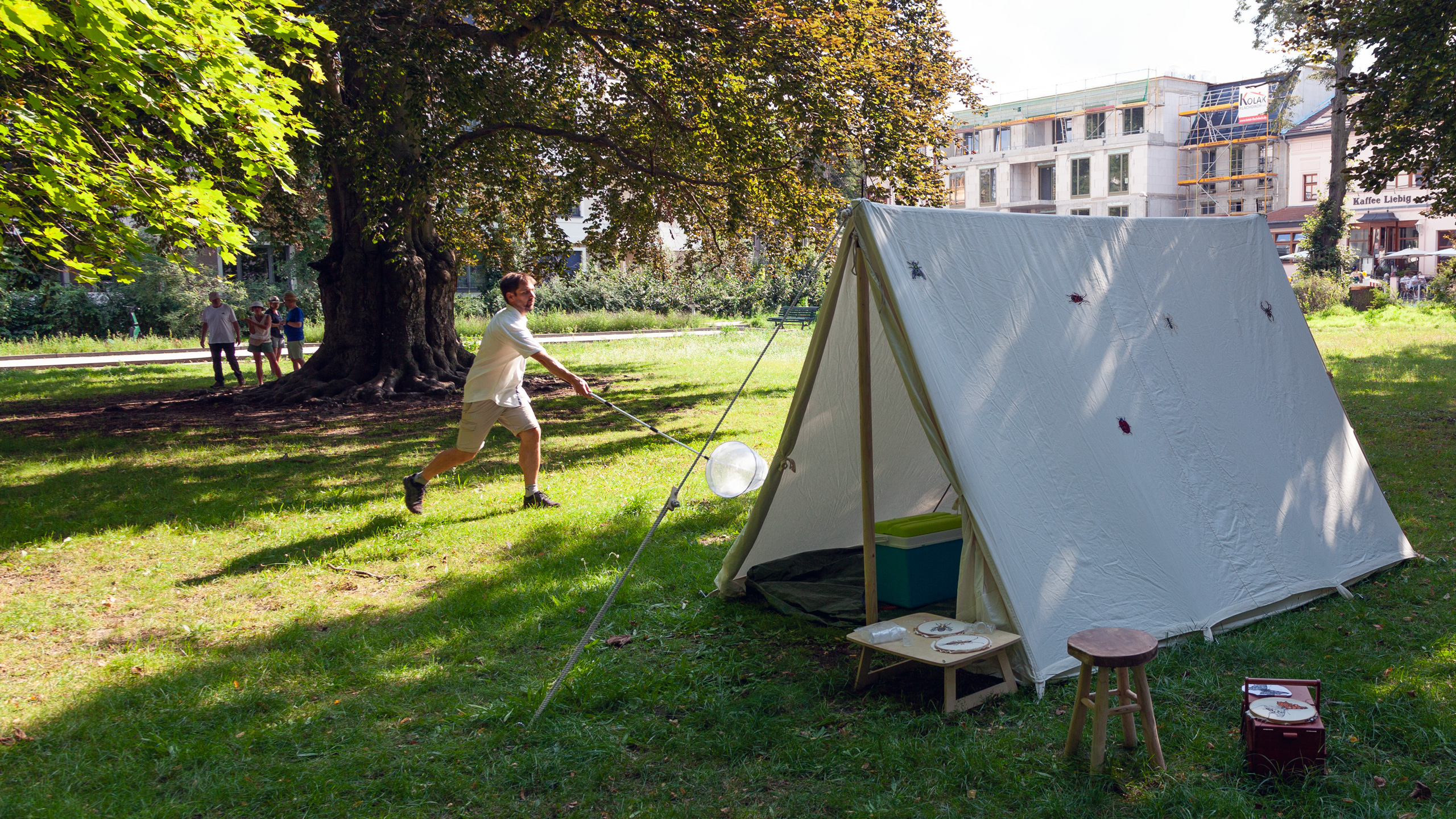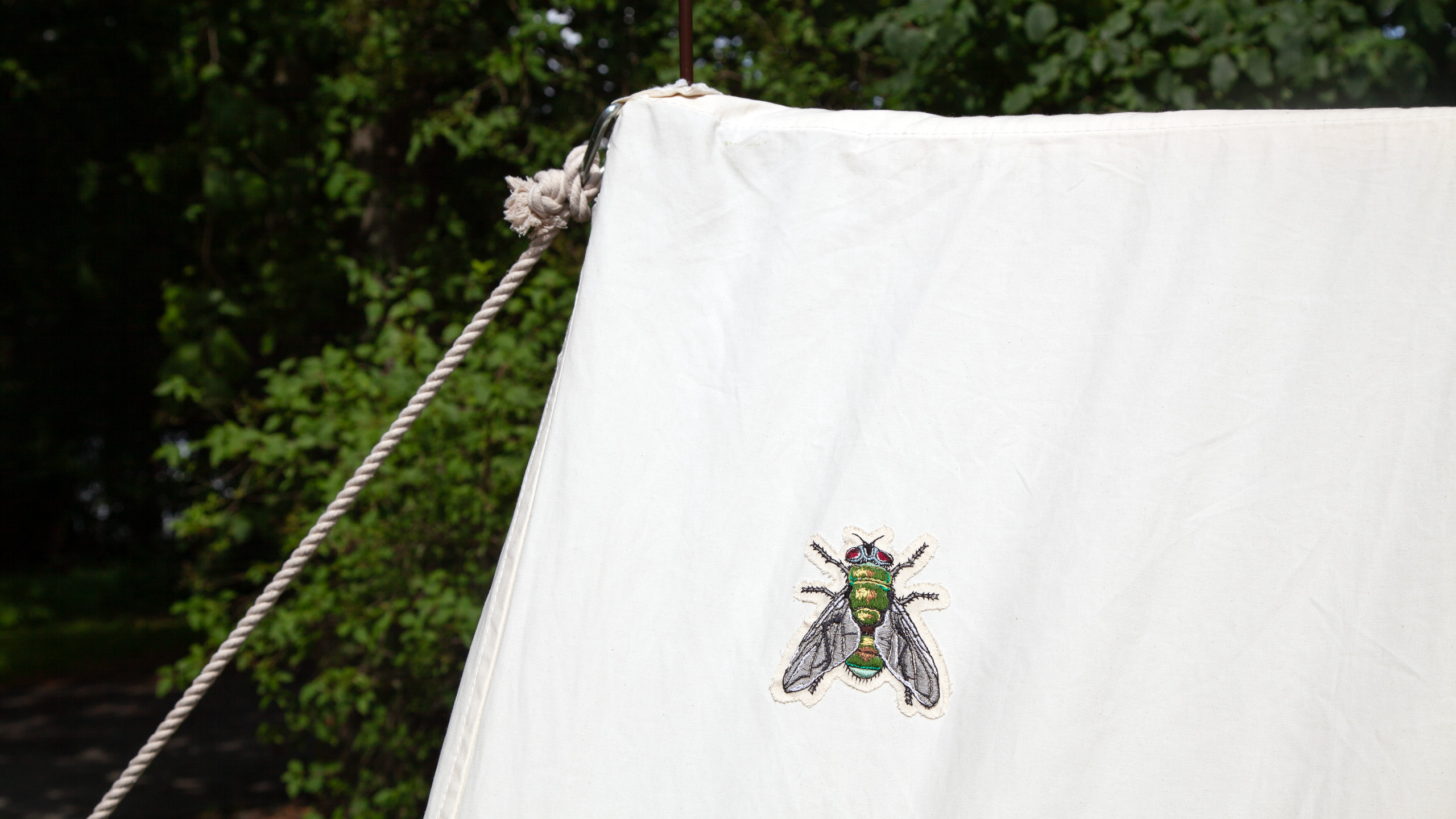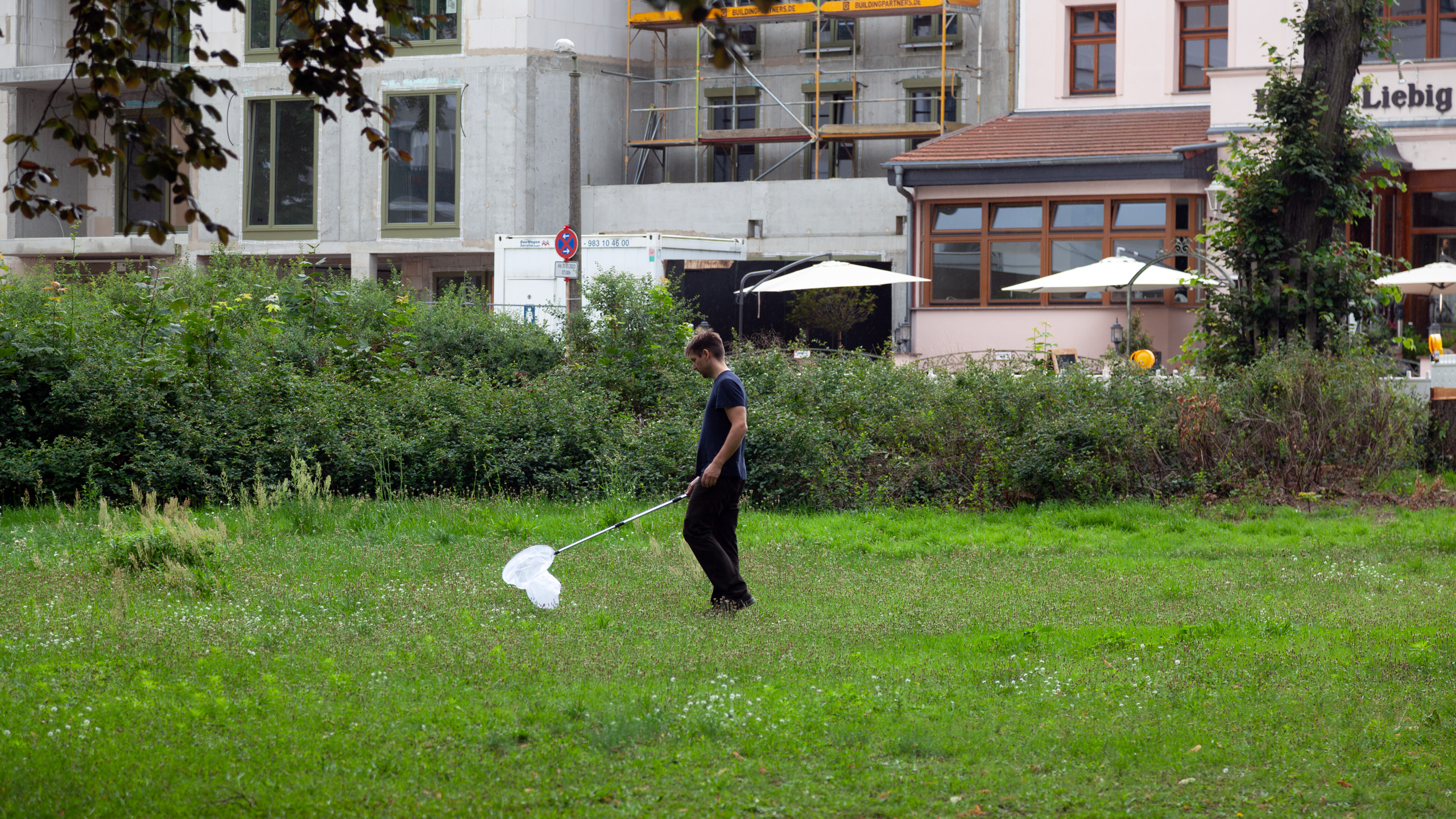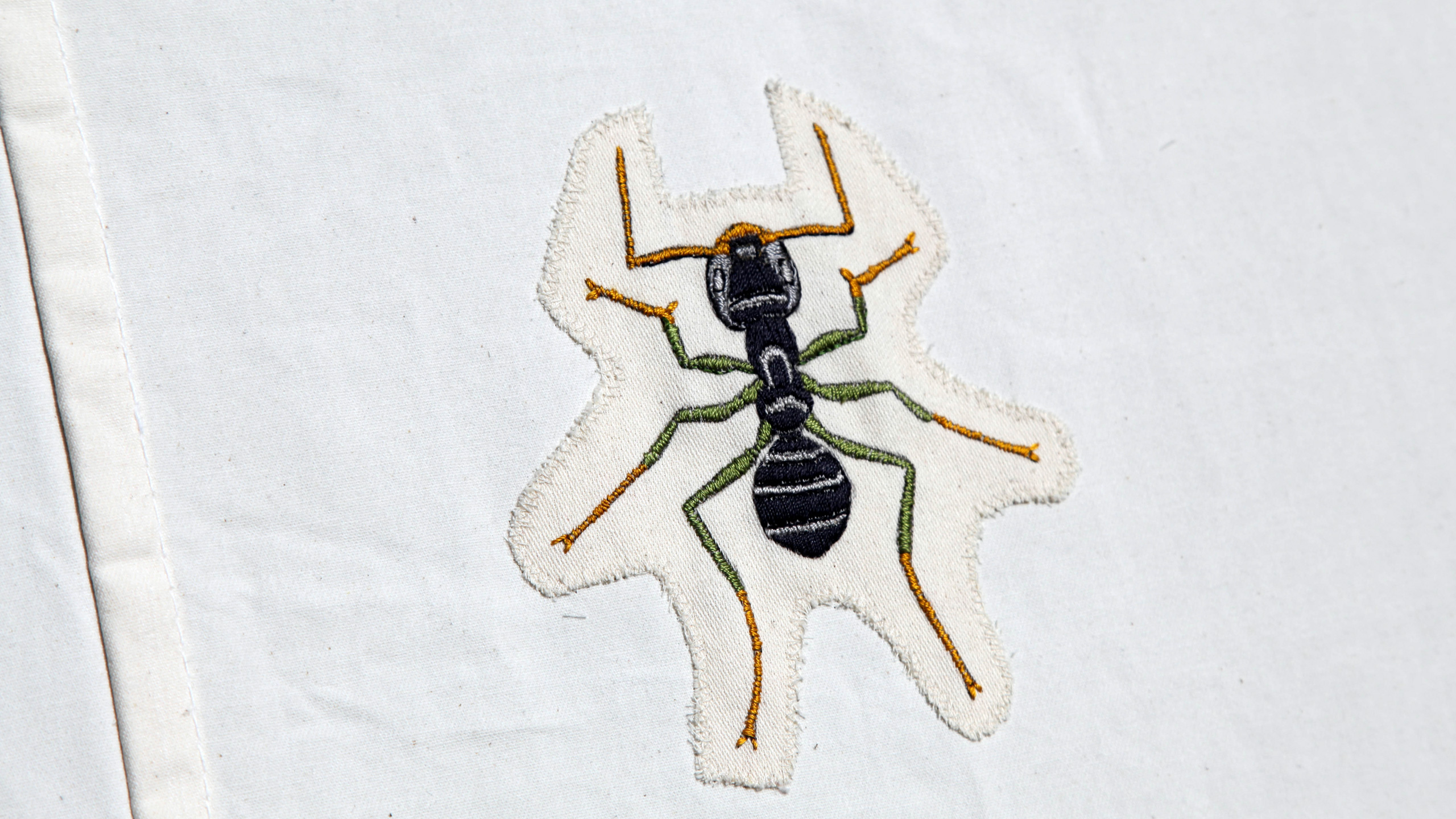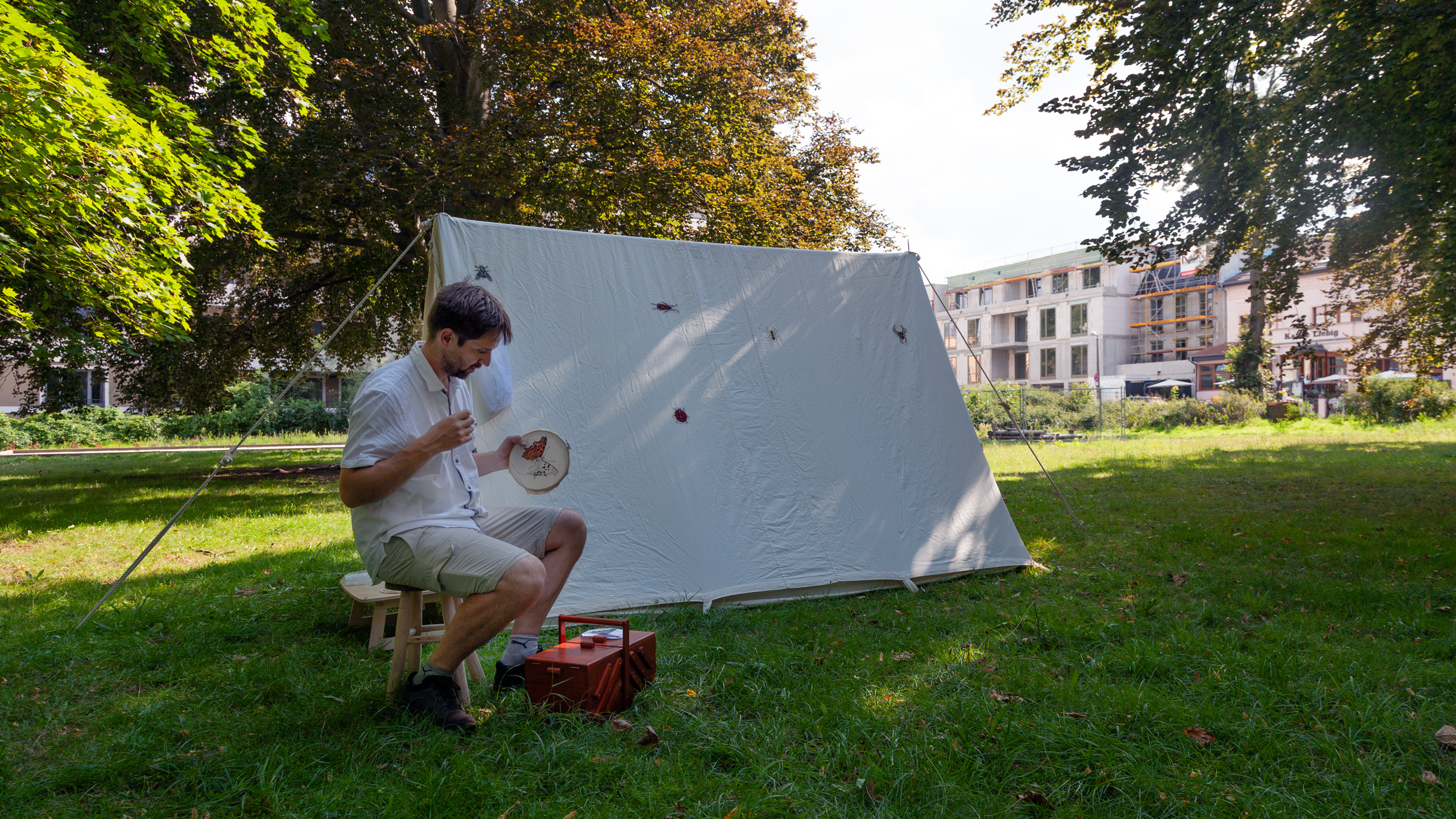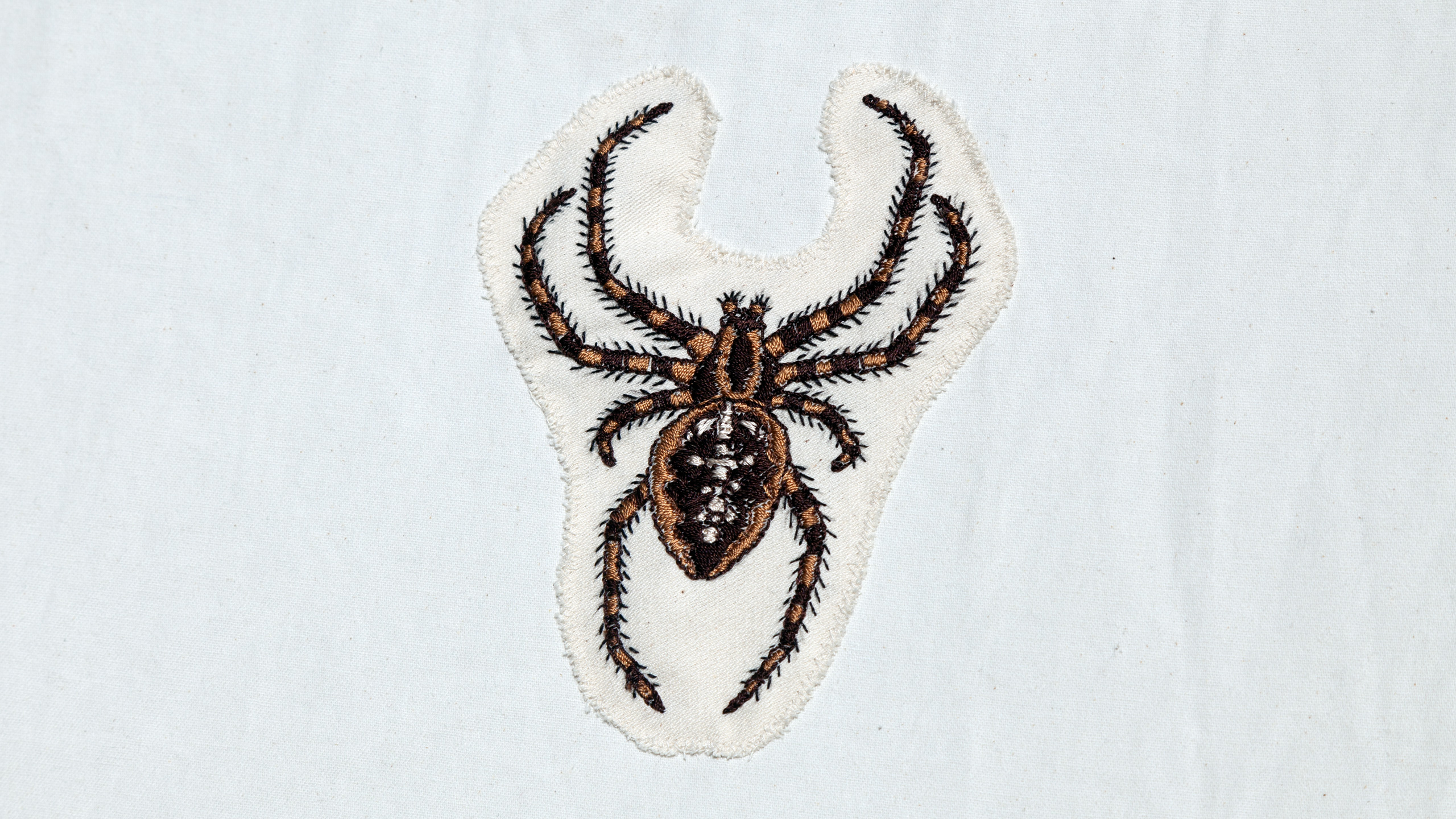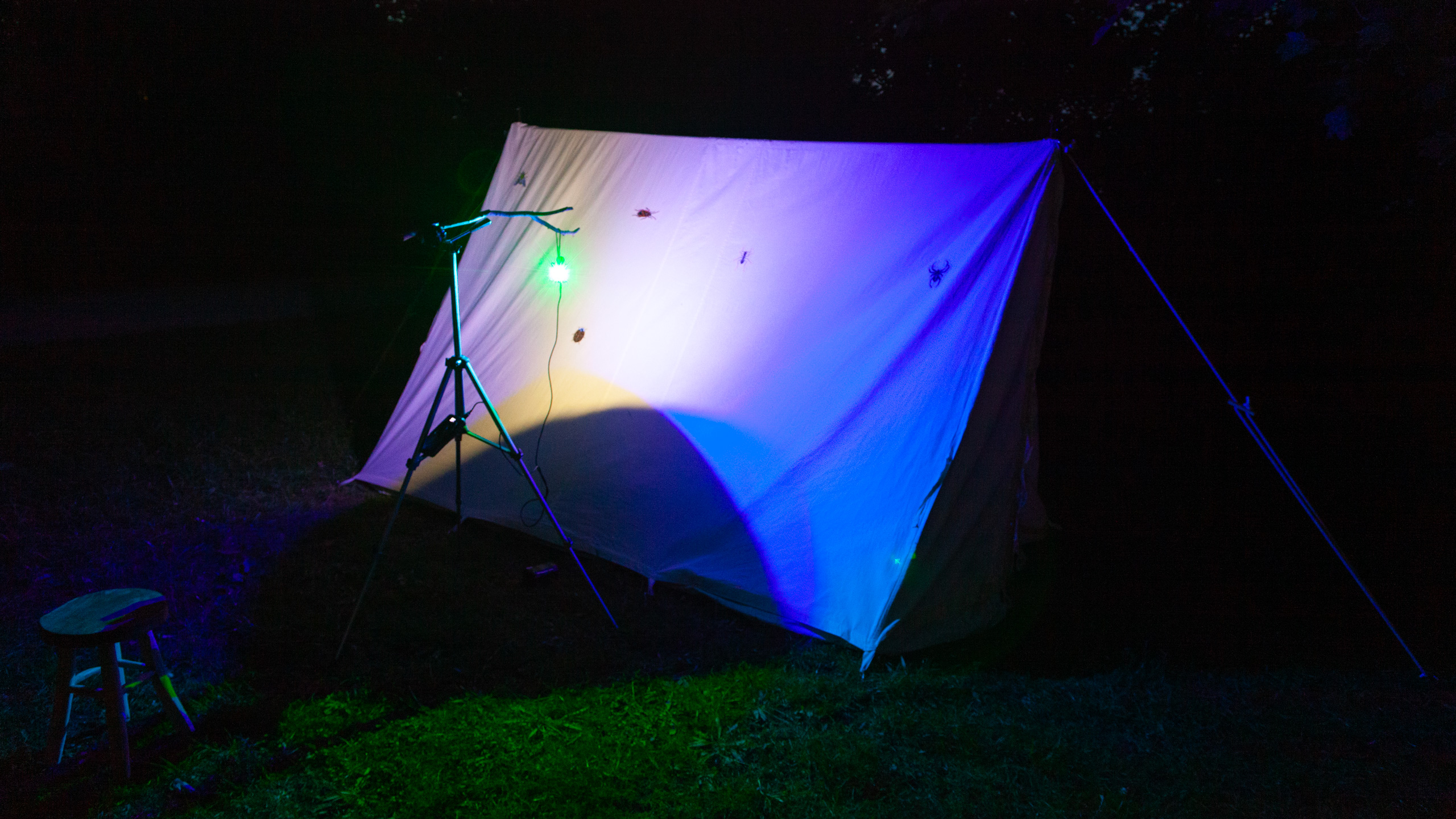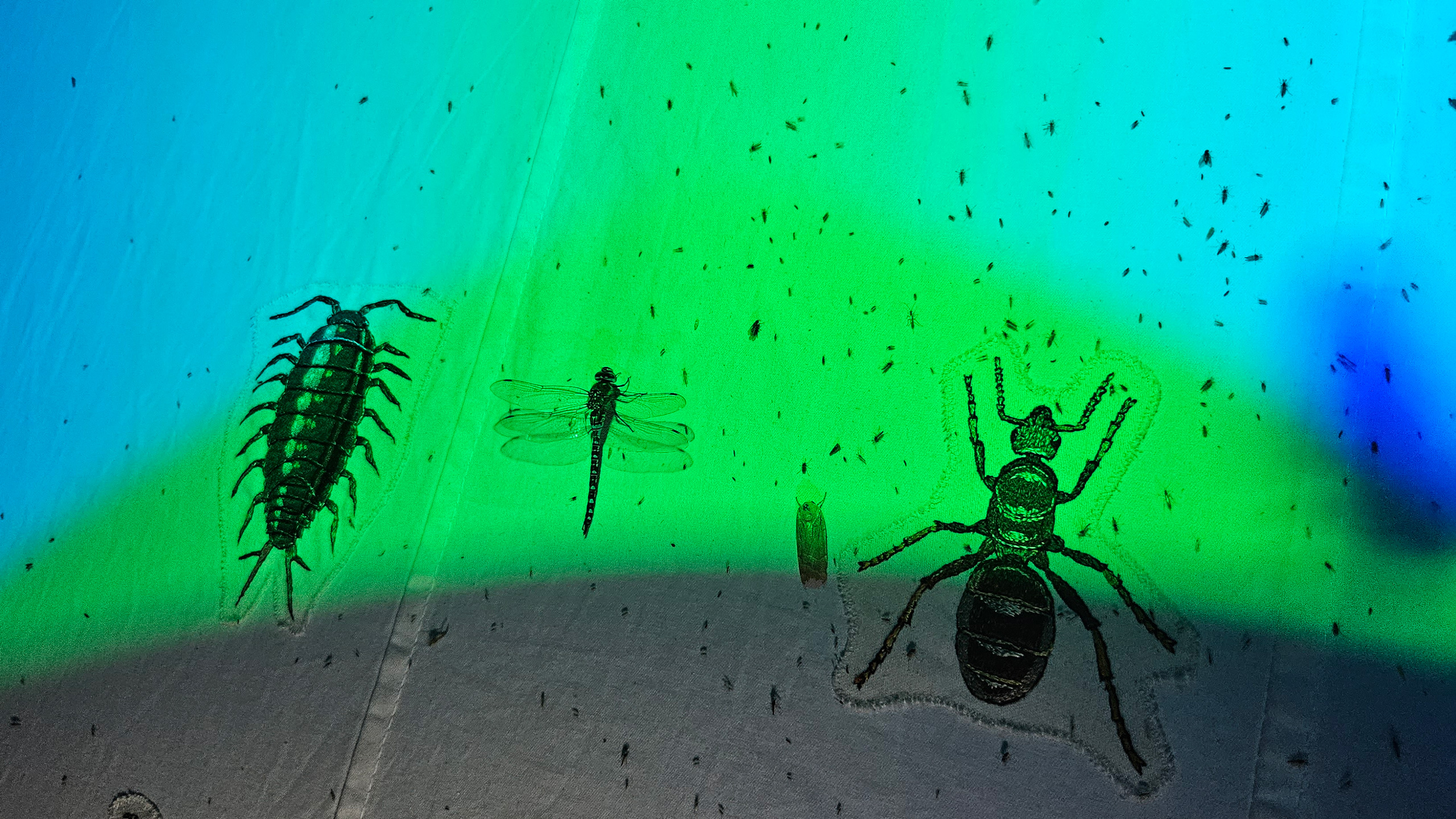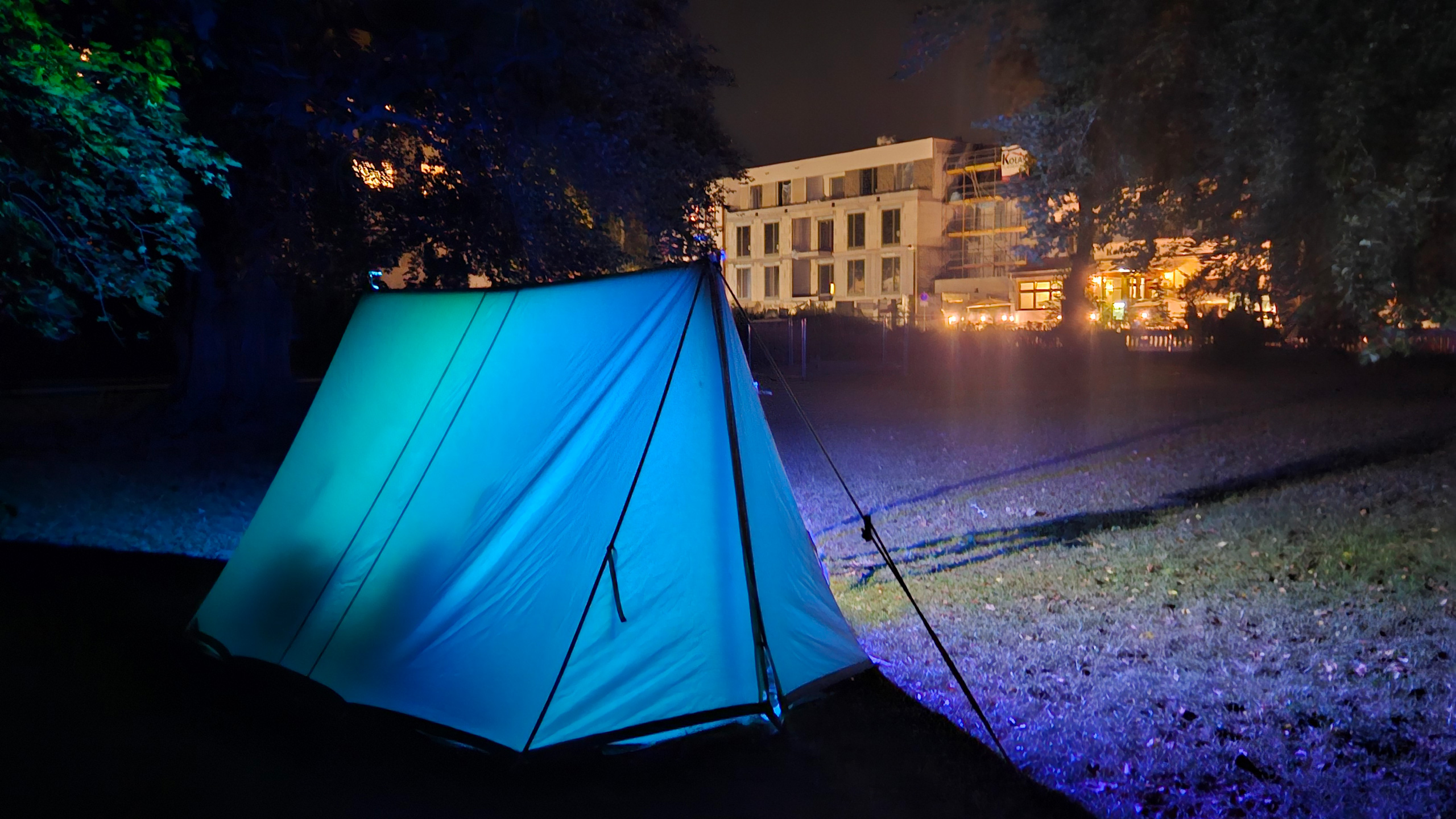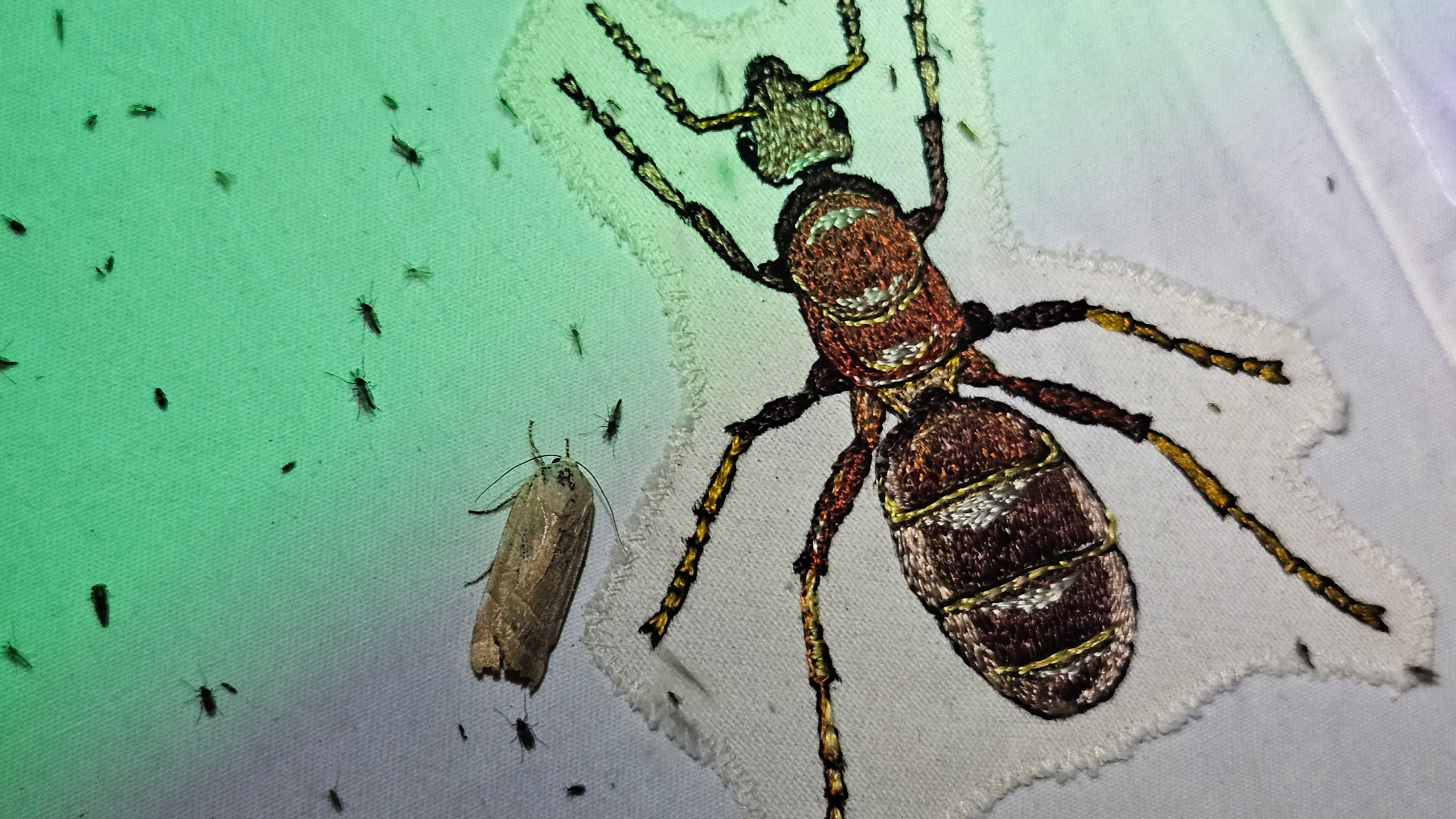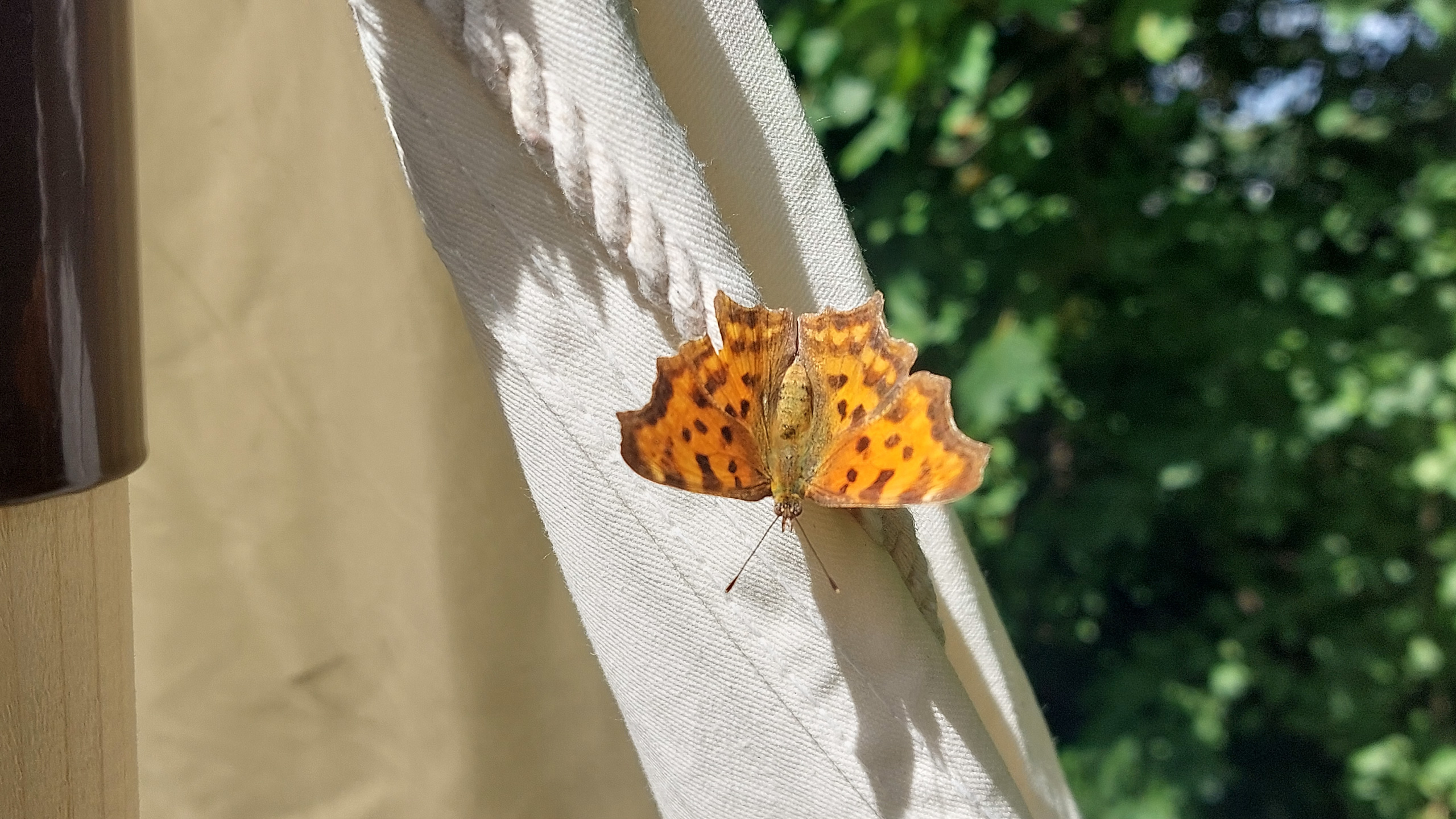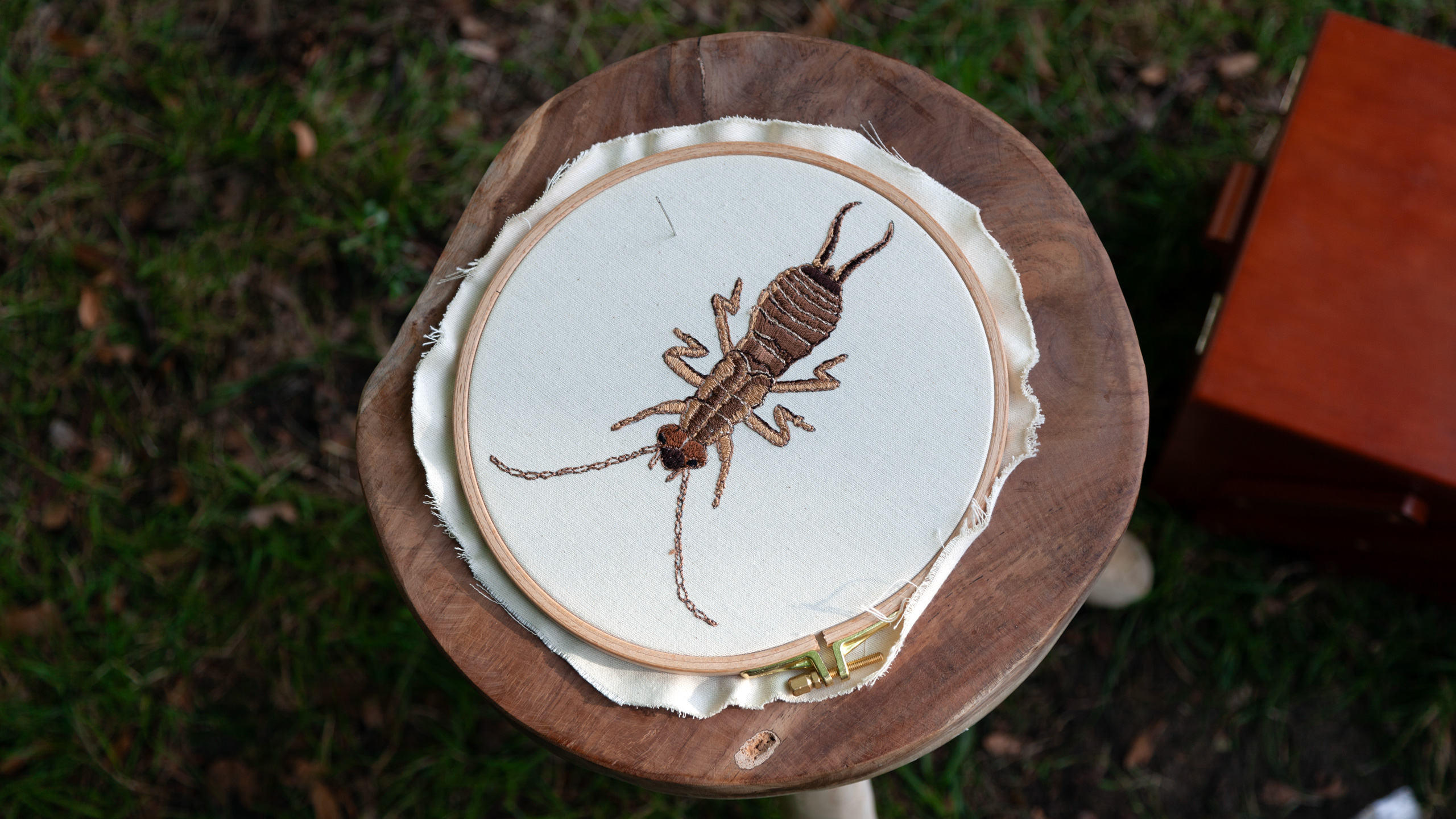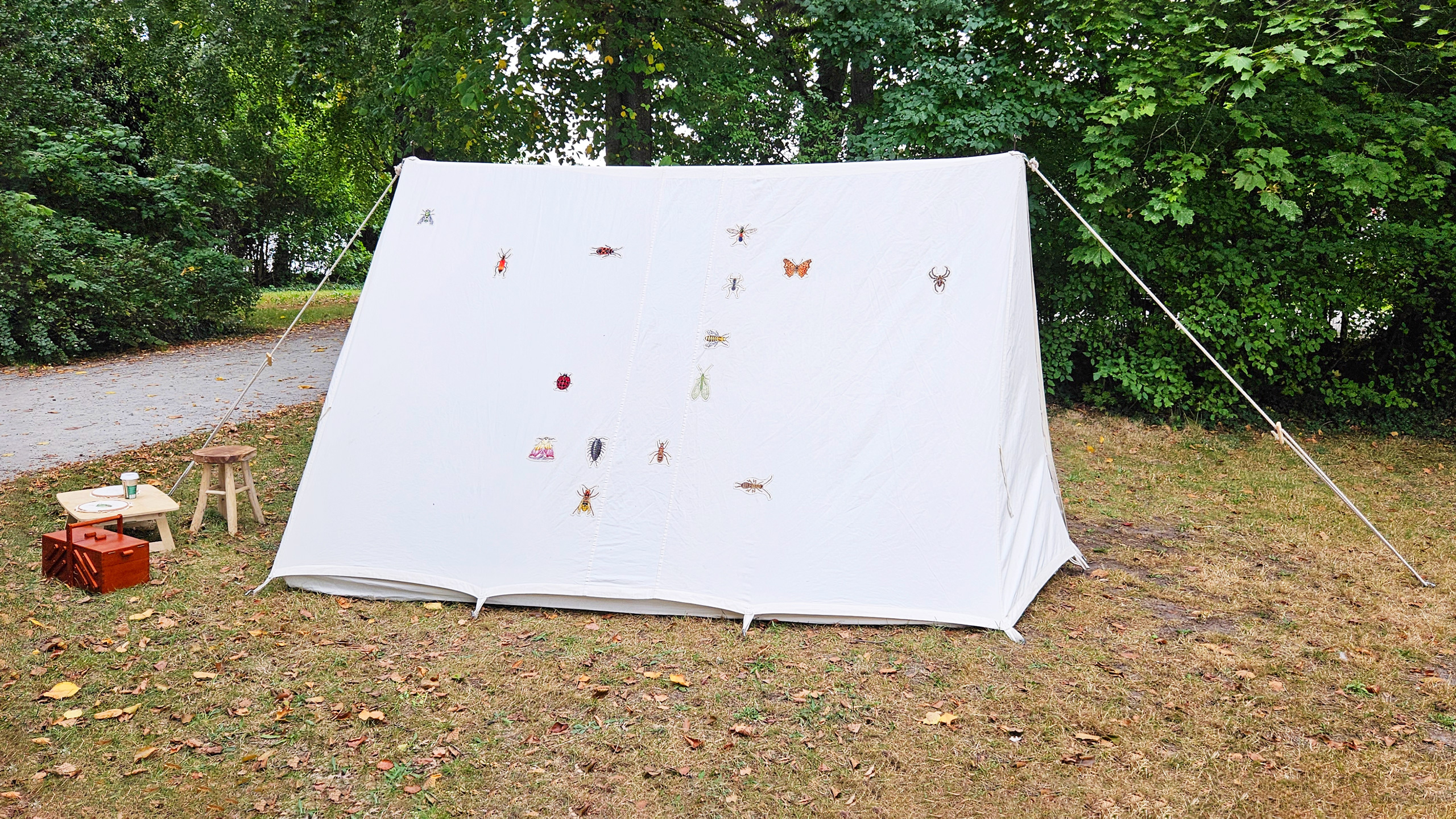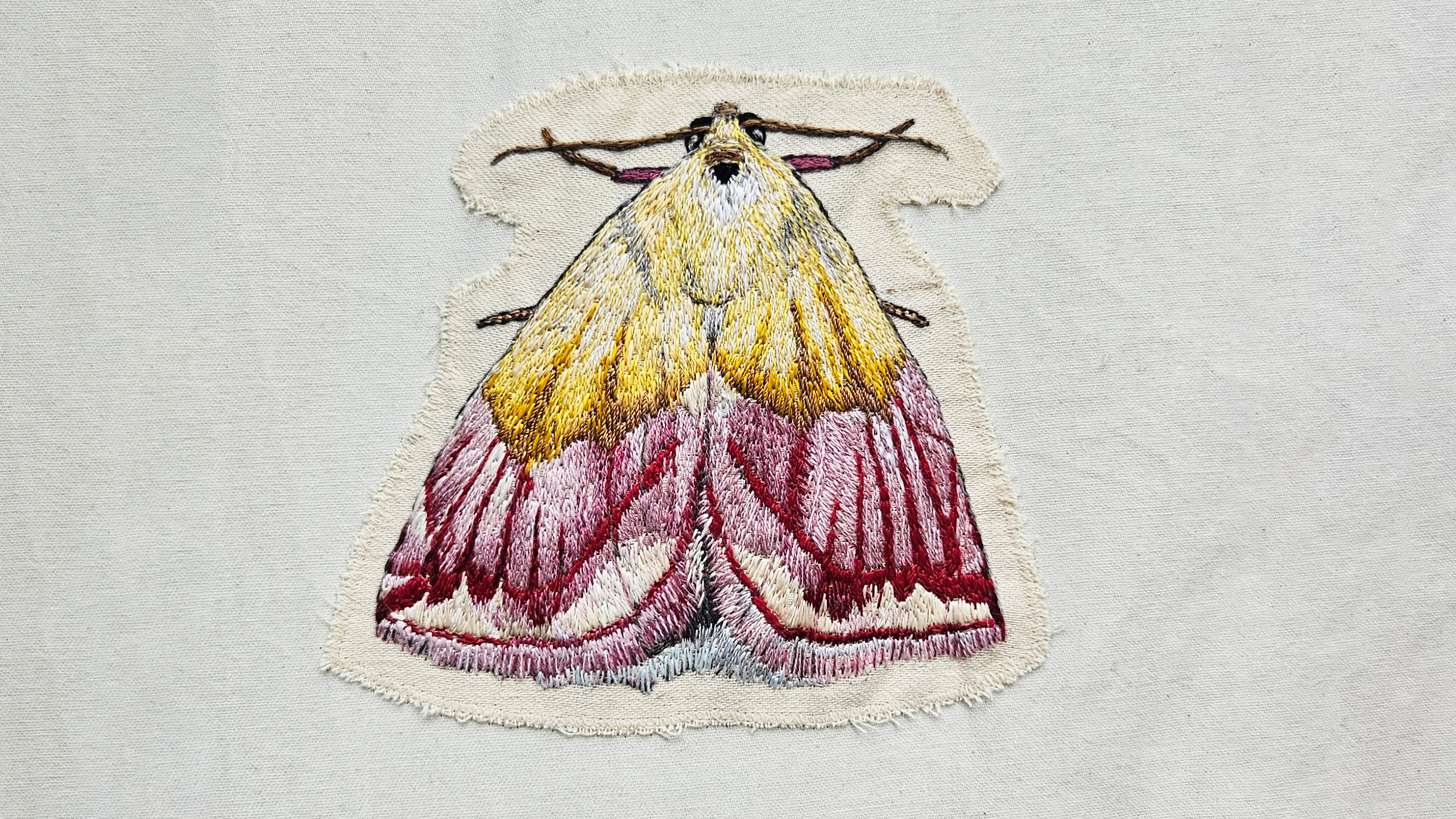(German for ‘A City for All’) travels back to the 18th century when cotton and silk farms formed the beginning of Grünau, a district along the Dahme river in the south of Berlin. Much of the waterside properties are privatised and only a few places still provide access to the river. The work took place in one of such rare public spaces (Park an der Anlegestelle), from where the ecological as well as the social conditions were documented. The results of the inventory were made visible in the park itself. In reference to the original inhabitants, a replica of a historical cotton tent was decorated with insect embroideries made of silk. They were placed in a specific pattern on the canvas, in such a way, that, over time, the title of the work appeared: Eine Stadt für Alle, a slogan, commonly used during anti-gentrification demonstrations in Berlin and which, in the work, can be understood from both a human and a more-than-human perspective. The interactions with passers-by were documented and used for a sound piece, which was played from inside the tent. In the end, due to the time consuming nature of the medium, only parts of the title were covered.
In 1750, when the first settlers of Grünau were invited by Frederick II (King of Prussia) to set up cotton and silk farms in the south of Berlin, the banks of the river Dahme must have looked so green and lush that they called their village “Auf der Grünen Aue” (On the green meadow). The natural surroundings did not change much until 100 years later, when Berlin citizens discovered the area as a place for recreation. At the beginning of the 20th century, people came to Grünau with their tents to enjoy the green waterfront. Over time, the area developed into a water sports paradise with luxurious restaurants and villas. After 1990, Grünau became a sought-after object of speculation and expensive real estate and became a symbol of land and building speculation in Berlin. Today, public space is scarce and only a few places offer access to the water, as fences make it impossible to walk along the riverside. The small “Park an der Anlegestelle” forms a welcome exception.
To show the contrast between the original and current state of Grünau, the project explored both the ecological and social situation in the park. The ecological state was measured through a close examination of the insect diversity. The number and diversity of insects are good indicators of the ecological condition of an environment. Recent studies show that the number of insects has declined dramatically worldwide due to the climate crisis, pollution and urbanization. For example, the number of flying insects in German nature reserves has fallen by 75 % in recent decades. To document the remaining insects in Grünau, I undertook a biological census, during which hundreds of species were indexed. To enable a count at night, a bright lamp was placed around the tent.
